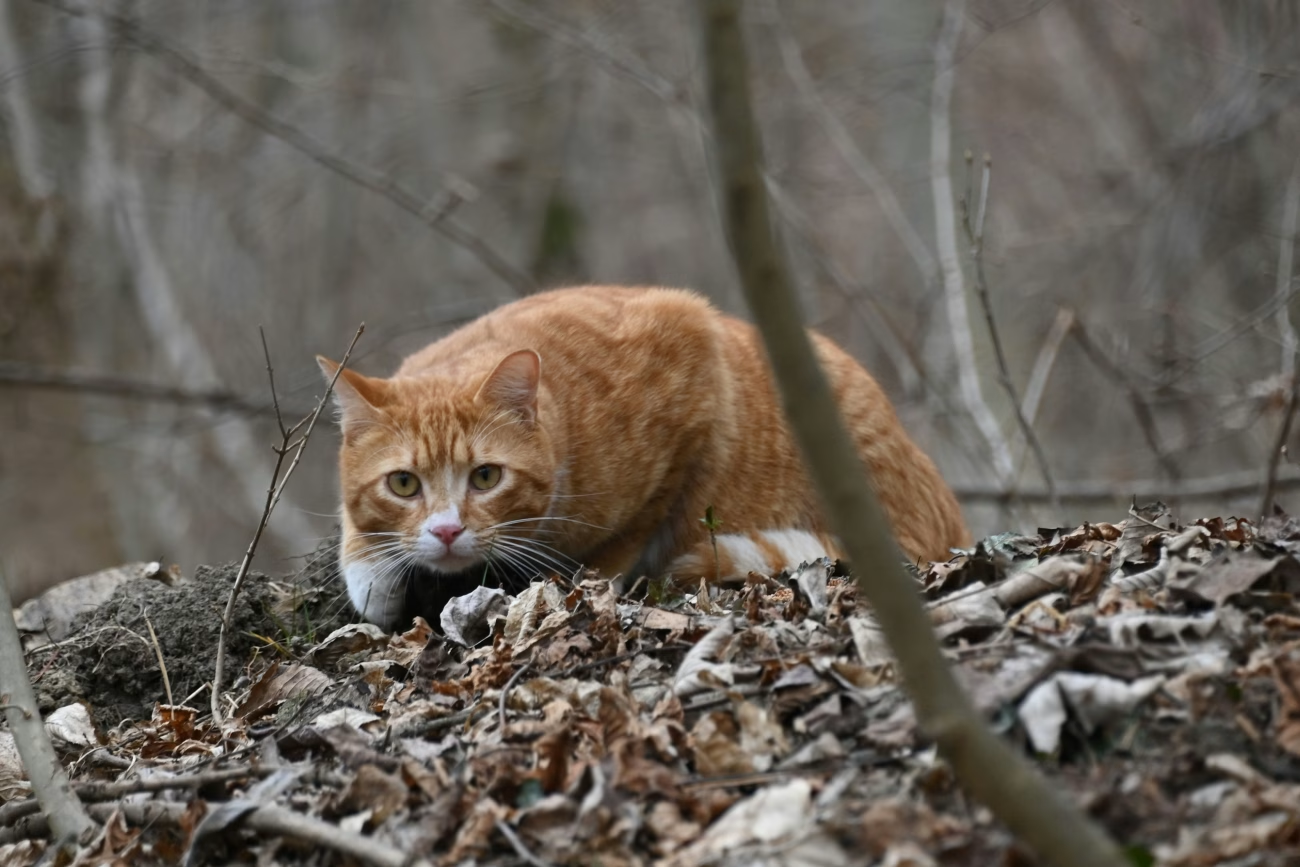Still a Hunter at Heart
That calm, purring bundle on your couch? It’s a predator in disguise.
Beneath the soft paws and sleepy stretches lives an animal shaped by thousands of years of survival, one with instincts that still echo the lion’s roar.
Even though domestic cats have lived alongside humans for centuries, their minds and behaviors remain strikingly close to their wild cousins. In fact, many of the quirky, playful, or downright puzzling things your cat does every day come straight from the hunting strategies of big cats like lions.
So yes, your cat still hunts like a lion. Just in a more carpeted environment.
In this article, we’ll break down the hidden wild inside your feline friend and uncover how those same instincts survive (and thrive) in your living room.
The Wild Connection: Cats and Lions Share More Than a Family Tree
Despite their size difference, domestic cats (Felis catus) and lions (Panthera leo) are part of the same biological family: Felidae. They’re distant cousins, but close enough that house cats share more than 95% of their DNA with big cats like lions, leopards, and tigers.
But it’s not just genetic. Domestic cats and lions share:
- The same predatory sequence (stalk, chase, pounce and bite)
- Similar sleep-wake cycles (most active at dawn and dusk)
- Territorial behavior, scent-marking, and even social structures in some cases
Though lions live in prides and your cat lives in your kitchen, they’re driven by surprisingly similar instincts.. especially when it comes to hunting.
Hunting Instincts in Action: Lion-Like Behaviors in Your Cat
Let’s take a closer look at everyday things your cat does that are actually rooted in wild, lion-like behaviors.
1. The Slow Stalk
That creeping walk your cat does across the floor, belly low, eyes locked on a moving object.. that’s classic hunting posture. Lions do the exact same thing to sneak up on prey without being seen.
Why it happens: Cats rely on stealth over speed. Sneaking up helps conserve energy for the final pounce.
2. The Butt Wiggle Before the Pounce
Ever notice your cat give a little “butt shake” before leaping onto a toy? That’s a real thing, and lions do it too. It’s a way to adjust their balance, lock in aim, and build momentum.
Why it happens: It prepares their muscles and helps coordinate their attack with maximum precision.
3. Toy Carrying or Hiding “Prey”
Some cats drag toys around, stash them under beds, or bring them to your feet. This mimics prey-carrying behavior seen in lions and other wild cats.
Why it happens: It’s part of the “post-hunt” instinct, protecting food or sharing it with the pride.
4. Attacking When You Least Expect It
You walk past… and suddenly your leg is under attack. That ambush-style play mimics how lions leap out of grass to surprise prey.
Why it happens: Ambush increases success in the wild, and it’s still fun for your feline today.
5. Pouncing on Stationary Objects
Ever see your cat pounce on a spot that isn’t even moving? Wild cats do this to, it’s a form of practice. They “play hunt” to perfect their skills.
Why it happens: Cats are hardwired to hunt, even when they’re full. Play is instinctual training.
Why Cats Hunt Even If They’re Well Fed
You fill their bowl twice a day. So why does your cat still chase shadows, bugs, and bottle caps?
Because hunting isn’t just about hunger. It’s a mental and behavioral need.
In the wild, lions often engage in surplus killing, hunting more prey than they can eat. This isn’t wasteful; it’s a survival strategy. Domestic cats retain that same instinct, especially when they’re bored or under-stimulated.
Hunting satisfies:
- The drive to chase and catch
- Curiosity and mental stimulation
- Control over their environment
Feeding a cat without offering a way to “hunt” creates frustration and even behavioral problems. That’s why enrichment is so important.
How to Feed the Instinct Without Live Prey
You don’t need a savanna or herd of gazelles. Just a little creativity.
Here’s how to support your cat’s inner lion in a modern home:
1. Interactive Toys: Use feather wands, teasers, or toys that mimic small animals. Move them like prey.. hide, pause, dart.
2. Puzzle Feeders: Make your cat “work” for food. Puzzle toys simulate the challenge of capturing prey.
3. Laser Play With a Catch: Always end a laser session with a real toy or treat. That “kill” is important.
4. Rotating Toy Box: Don’t leave the same toys out forever. Rotate them weekly to keep things novel and engaging.
5. Hiding Games: Hide treats around the room to simulate scent tracking and discovery, just like a wild hunt.
What We Learn When We Watch
Understanding your cat’s wild side doesn’t just explain quirky behaviors, it makes you a better pet parent.
- That “midnight zoomie”? It’s built-in hunting hour.
- The random sock attack? Training session.
- The gift of a dead toy? That’s love… wild-style.
When you view your cat through the lens of evolution, it all makes sense. and it becomes even more beautiful.
The Lion in the Living Room
Your cat may not look like a lion, but in many ways, it still thinks and acts like one. From silent stalking to surprise attacks on unsuspecting toes, the signs are there.. written in instinct, DNA, and behavior.
Respecting those instincts doesn’t just enrich your cat’s life. It helps you form a deeper bond, built on understanding what your cat really is:
A companion. And a creature of comfort with the wild in its bones.



2 thoughts on “Do Cats Still Hunt Like Lions? Instincts You See Every Day”